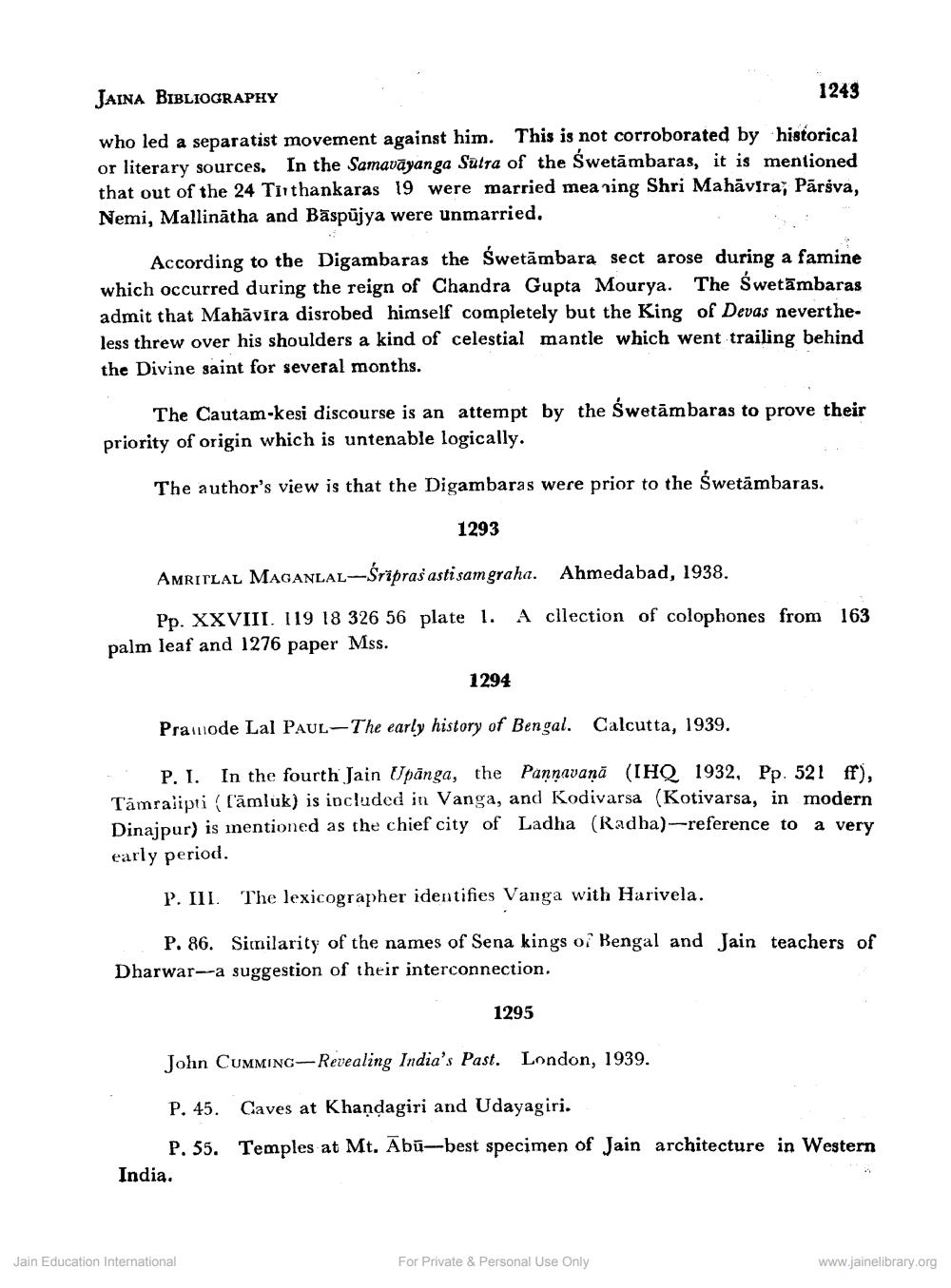________________
JAINA BIBLIOGRAPHY
1243
who led a separatist movement against him. This is not corroborated by historical or literary sources. In the Samavāyanga Sutra of the Swetāmbaras, it is mentioned that out of the 24 Tirthankaras 19 were married meaning Shri Mahāvira; Pārsva, Nemi, Mallinātha and Bāspūjya were unmarried.
According to the Digambaras the Śwetāmbara sect arose during a famine which occurred during the reign of Chandra Gupta Mourya. The Swetambaras admit that Mahāvira disrobed himself completely but the King of Devas nevertheless threw over his shoulders a kind of celestial mantle which went trailing behind the Divine saint for several months.
The Cautam-kesi discourse is an attempt by the Śwetāmbaras to prove their priority of origin which is untenable logically.
The author's view is that the Digambaras were prior to the Śwetāmbaras.
1293
AMRITLAL MAGANLAL --Sripras' asti samgraha. Ahmedabad, 1938.
163
Pp. XXVIII. 119 18 326 56 plate 1. A cllection of colophones from palm leaf and 1276 paper Mss.
1294
Pramode Lal PAUL-The early history of Bengal. Calcutta, 1939.
P. I. In the fourth Jain Upanga, the Pannavană (IHQ 1932, Pp. 521 ff), Támraiipi (l'āmluk) is included in Vanga, and Kodivarsa (Kotivarsa, in modern Dinajpur) is inentioned as the chief city of Ladha (Radha)-reference to a very early period.
P. III.
The lexicographer identifies Vanga with Harivela.
P. 86. Similarity of the names of Sena kings or Bengal and Jain teachers of Dharwar--a suggestion of their interconnection.
1295
John CUMMING— Revealing India's Past.
London, 1939.
P. 45. Caves at Khaņdagiri and Udayagiri.
P. 55. Temples at Mt. Abū--best specimen of Jain architecture in Western India.
Jain Education International
For Private & Personal Use Only
www.jainelibrary.org




